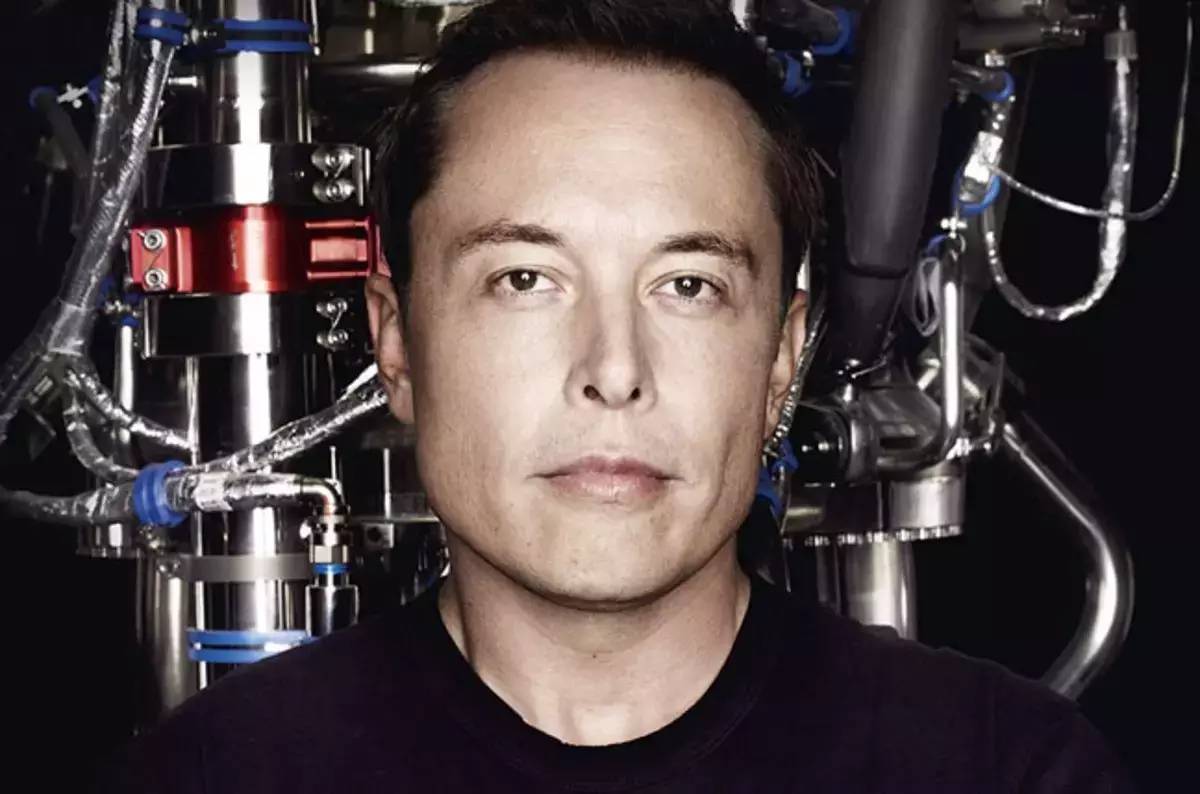
On July 20th, Musk updated a blog post on Tesla’s official website, officially announcing the complete plan of the Tesla strategy. In addition to the previously known three-step plan, Musk added the most important piece of information: providing solar power. He emphasized that Tesla’s strategic blueprint has included solar power planning for the past decade.
In a previous speech by Tesla’s CTO Straubel (“An Essential Read: Straubel’s Speech on How Tesla is Leading the Way to Build A Cleaner Grid for A Sustainable Future”), we mentioned that Tesla’s true ambition is in energy. The reason why Tesla chose cars as the entry point is because “the transportation industry is the most concentrated sector using fossil fuels, and 95% of fossil fuel energy drives all people and goods on this planet.” From the beginning, when Musk promoted Tesla and launched the SolarCity plan simultaneously, we could already see that Tesla’s grand ambition was not as simple as we thought.
Now, Musk has finally officially released the energy plan, and Tesla’s official website has changed from teslamotors.com to tesla.com.
Musk also announced Tesla’s plans for autonomous driving and shared transportation. As I have written in my previous article (“How to seize the opportunities of future car transformation”), it is inevitable for car manufacturers to choose shared transportation. In addition, the boundaries between public and private cars will change in the future. For example, there will be different developments in the design of public buses as predicted by Musk.
Furthermore, regarding the Tesla model series that everyone is most concerned about, Musk stated that he will not introduce cars at prices lower than the Model 3 and will expand its product line to enter the niche markets of trucks and high-capacity vehicles (public transportation?).
Stay tuned.
▼
The following is the official translation released by Tesla’s official Weibo account:
Tesla’s blueprint chapter two
MuskTen years ago, I published the first chapter of the Tesla master plan blueprint, which is now in its final stages of completion. The plan was not complicated and can be summarized as follows:
Step 1: Build a small volume expensive car;
Step 2: Use the money earned from Step 1 to develop a medium volume car at a lower price;
Step 3: Use the money earned from Step 2 to create a mass market, affordable car;
Step 4: Provide solar power. No kidding, this has literally been on our website for 10 years.
I had to start with Step 1 (building a small volume expensive car) because that was all the money I had from PayPal. I didn’t want to take anyone’s money to start a company and therefore had to do it myself. Historically, most car startups have ended in failure. As of 2016, the two surviving US car companies are Ford and Tesla. Starting a car company is idiotic and an electric car company is idiocy squared.
A small volume car means the factory will be smaller and more basic, with most of the work done by hand until economies of scale can be achieved. Therefore, regardless of the model, whether it’s an economy car or a sports car, it will be expensive until we can achieve economies of scale. However, at least with sports cars, someone will pay a lot for performance, where no one will pay $100k for an electric Honda Civic, no matter how cool it looks.
One of the reasons I published the first chapter of the Tesla master plan blueprint was to rebut attacks on Tesla, such as claims that we only build cars for wealthy people because there were not enough companies making sports cars or some other bizarre rationale. Unfortunately, that blog post failed to stop attacks from those using the same arguments against Tesla. My primary reason for publishing the overarching plan was to establish the company’s current strategic position and the planning behind our actions. All our plans and actions have been focused on accelerating the advent of sustainable energy to enable us to imagine and live in a future where we can have beautiful lives. This is the true meaning of sustainability, not a hippy thing, this is all of our futures.
Fundamentally, we must achieve a sustainable energy economy or we will run out of fossil fuels and civilization will collapse. For the almost unanimous scientific consensus is that dramatically increasing atmospheric and oceanic carbon levels is insane. Therefore, the faster we achieve sustainability, the better.
To that end, here are our plans:
- Integrate energy generation and storageCreate integrated solar panel and battery products that are aesthetically pleasing and serve as personal power devices, achieving economies of scale worldwide with just one purchase, one installation, one service center, and one mobile app.
If Tesla and SolarCity were separate companies, this goal would be difficult to achieve. Therefore, we must eliminate the barriers inherent in being two independent companies through integration. Although the two companies have similar origins and pursue the same overall goal of sustainable energy, they are completely independent, largely due to historical accident. Now, as Tesla prepares to expand Tesla Energy (Powerwall) and SolarCity prepares to offer a rich variety of differentiated solar products, the time has come to integrate these two companies.
- Rich product line and covering major forms of ground transportation
Currently, Tesla only enters two relatively small markets of high-end cars and SUVs. With the launch of Model 3, a compact SUV, and a small truck, we will enter more niche markets. Based on the third part of this plan, it seems unnecessary to make vehicle models that are cheaper than Model 3.
Expanding production capacity as quickly as possible is crucial to achieving sustainable development in the future. Tesla’s engineering department has focused a considerable amount of energy on designing equipment to manufacture equipment. First principles analysis of automated production suggests that a cycle of about 2 years is needed, and the first set of equipment to produce Model 3 can be considered Version 0.5, with Version 1.0 likely to appear in 2018, while Version 3 will achieve 5 to 10 times the production capacity.
In addition to passenger cars, we also need two other electric products: heavy-duty trucks and high-density urban transportation (tools). Tesla’s development of these two products is still in the early stages and will be announced to the public in 2017. We believe that Tesla Semi will greatly reduce transportation costs, while increasing safety and operational enjoyment.
With the emergence of autonomous driving, perhaps bus sizes can be reduced, and bus drivers can be transformed into fleet managers. Removing the central aisle in buses and adding seats at the entryway can increase the passenger density of the bus; matching acceleration and braking with other vehicles can avoid the inertial obstacles of traditional heavy-duty buses to smooth traffic flow, improving traffic congestion and delivering passengers to their destinations. Fixed call buttons at existing bus stops can be used by people without mobile phones, and there are also convenient designs for wheelchairs, strollers, and bicycles.
- Autonomous driving.With the maturity of technology, all Tesla models will be equipped with necessary hardware to achieve fully automated driving with fault tolerance, meaning that the vehicle can still drive safely even if any system failures occur. It should be emphasized that compared to installing cameras, radars, sonars, and computing hardware, software refinement and verification take much longer.
Even if one day the software is highly refined and even surpasses human drivers, it will still take a long time to obtain full regulatory approval for autonomous driving, and this time will vary greatly depending on the region. We expect that about 6 billion miles (close to 10 billion kilometers) of autonomous driving mileage needs to be accumulated to obtain regulatory approval from various countries around the world. Currently, the learning mileage of autonomous driving vehicles has just exceeded 3 million miles (close to 5 million kilometers) per day.
I would like to add here that Tesla uses partial autonomous driving instead of waiting for full autonomous driving at some point in the future, and the most important reason is that, under the correct conditions, autonomous driving is much safer than human driving. Therefore, delaying the release just because of fears of negative media reports or legal liability calculated from a commercial perspective is morally worthy of condemnation.
According to a recent report from the US National Highway Traffic Safety Administration (NHTSA) in 2015, the accident rate for automobile injuries and deaths increased by 8%, and one person died in a traffic accident every 89 million miles. The driving mileage of Autopilot will soon exceed twice this mileage and the system is evolving every day. As some have called for, banning Tesla’s Autopilot system is no more reasonable than banning autopilot functions on airplanes, and our system is named after the autopilot function on airplanes.
It is important to explain why Autopilot is referred to as the “Beta Test Edition”. This is not the usual meaning of the word when describing “beta software”. Before release to consumers, each version goes through extensive internal testing. The reason why it is referred to as the “Beta Test Edition” is to reduce blind consumer trust and indicate that it will continue to be improved (Autopilot is always off by default). Once Autopilot is about 10 times safer than the average US automobile, the “Beta Test Edition” label will be removed.
After obtaining regulatory approval, full autonomous driving will allow you to summon your Tesla from almost anywhere. Once you get in, you can sleep, read, or do anything else on the way to your destination.You can conveniently set up a button on the Tesla App to add your vehicle to the Tesla shared fleet, allowing your car to earn income for you while you work or vacation, offsetting or even exceeding monthly loan or lease costs. This significantly reduces the true cost of ownership, to the point where almost anyone can own a Tesla. As most owners only utilize their vehicles 5% to 10% of the day, the basic economic utility of a fully autonomous Tesla will be several times that of a non-autonomous car.
In cities where demand exceeds the supply of customer-owned cars, Tesla will operate its own fleet, ensuring you can always hail a ride from us no matter where you are.
In brief, Tesla’s Master Plan, Part Deux includes:
- Creating stunning solar roofs with seamlessly integrated battery storage
- Expanding the electric vehicle product line to address all major segments
- Developing a self-driving capability that is 10X safer than manual via massive fleet learning
- Enabling your car to make money for you when you aren’t using it
▼
Tesla fans are welcomed to join the group for communication.

 Seizing the opportunity of the future of automotive changeHow Tesla is restructuring the power grid this century, as told by Straubel
Seizing the opportunity of the future of automotive changeHow Tesla is restructuring the power grid this century, as told by Straubel
The ambition of Tesla Model X from Falcon wings
Five key issues affecting Tesla

This article is a translation by ChatGPT of a Chinese report from 42HOW. If you have any questions about it, please email bd@42how.com.
